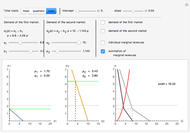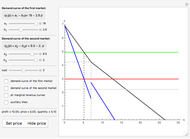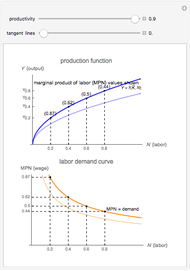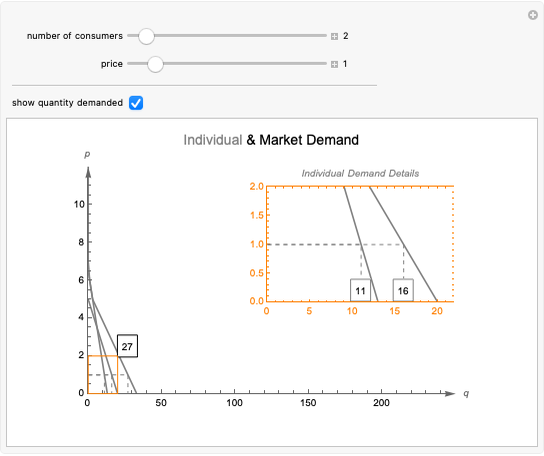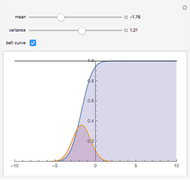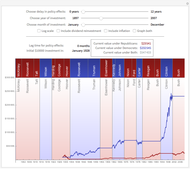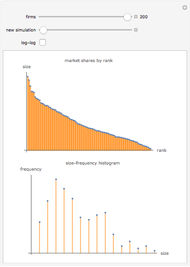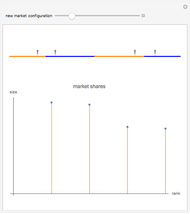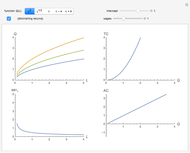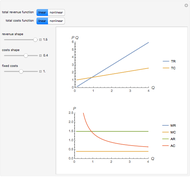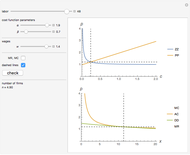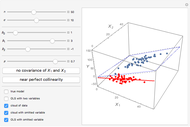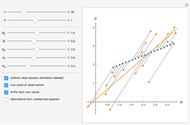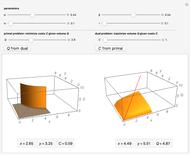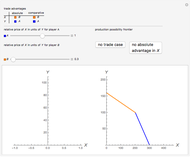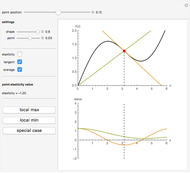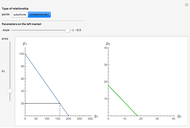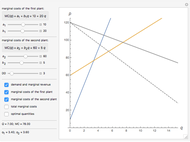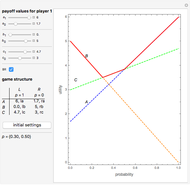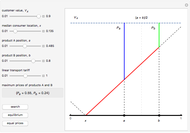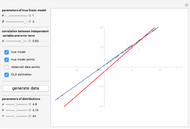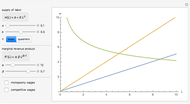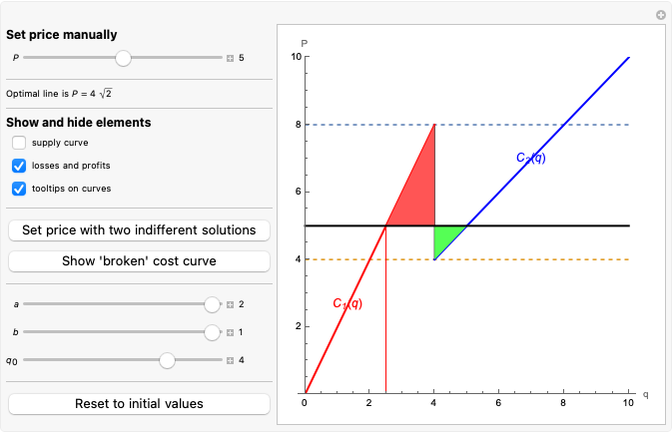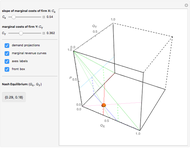Monopsony in the Labor Market

Requires a Wolfram Notebook System
Interact on desktop, mobile and cloud with the free Wolfram Player or other Wolfram Language products.
This Demonstration graphically represents the simple model of monopsony, an imperfect market structure characterized by the market power of one buyer. Market power means the ability to influence the price in the market. The monopsonist unilaterally sets the price (or wage if it comes to the labor market with one employer) according to the standard condition of equivalence between marginal benefits and marginal costs. We consider the labor market where the wage for a unit of labor  reflects the costs of the firm that can extract benefits (revenue) from employing labor
reflects the costs of the firm that can extract benefits (revenue) from employing labor  .
.
Contributed by: Timur Gareev (November 2015)
Open content licensed under CC BY-NC-SA
Snapshots
Details
The labor supply curve  in this model reflects in essence the average costs for a monopsonist, so total costs are
in this model reflects in essence the average costs for a monopsonist, so total costs are  . "Marginal costs," understood as the derivative of total costs of the monopsony, are
. "Marginal costs," understood as the derivative of total costs of the monopsony, are  . It is important that
. It is important that  is growing, so that the marginal costs curve is above the labor supply curve (with difference
is growing, so that the marginal costs curve is above the labor supply curve (with difference  ). This means that employing additional units of labor needs higher wages not only for that unit but for all units employed.
). This means that employing additional units of labor needs higher wages not only for that unit but for all units employed.
What is the analog of "marginal revenue"? In general terms, some revenue function  is concave. So the marginal revenue product of labor is the function
is concave. So the marginal revenue product of labor is the function  , which decreases with
, which decreases with  (by definition,
(by definition,  ). In the Demonstration, we can consider
). In the Demonstration, we can consider  . As a rule, monopsony market wages are lower than in the competitive market.
. As a rule, monopsony market wages are lower than in the competitive market.
Mouse over the plots to see the tooltips.
Reference
[1] Wikipedia. "Monopsony." (Nov 13, 2015) en.wikipedia.org/wiki/Monopsony.
Permanent Citation







